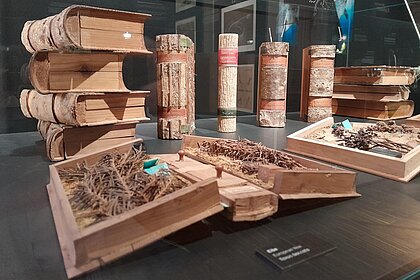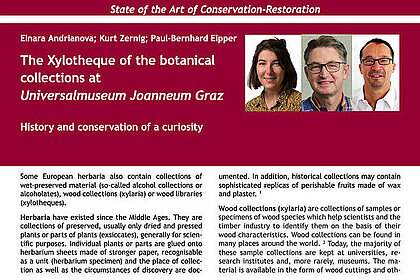Xylotheques were only produced during a very short period from 1780-1815, mainly in German-speaking countries, and reflect the interest in natural science that began with the Enlightenment.
Each xylotheque “volume” documents a species of wood as comprehensively as possible and is made with the wood of that species in three parts: the “spine” and the two “book covers”, which are connected with leather straps as hinges. These contain small twigs with leaves, flowers and fruit, usually mounted in a bed of moss. Seeds or pollen were often added in small wooden urns. Cross-sections of thin branches, rolled up twigs, pieces of charcoal, veneers or small vials of essential substances etc. can indicate the various uses of the respective type of wood. A wooden cube with a side length of 1 cm is used to determine the specific weight.
A xylotheque is therefore a sophisticated handcrafted product that only a few could afford. Originally, they were probably only found in the libraries of the wealthy aristocracy or in monasteries with rich estates.





















